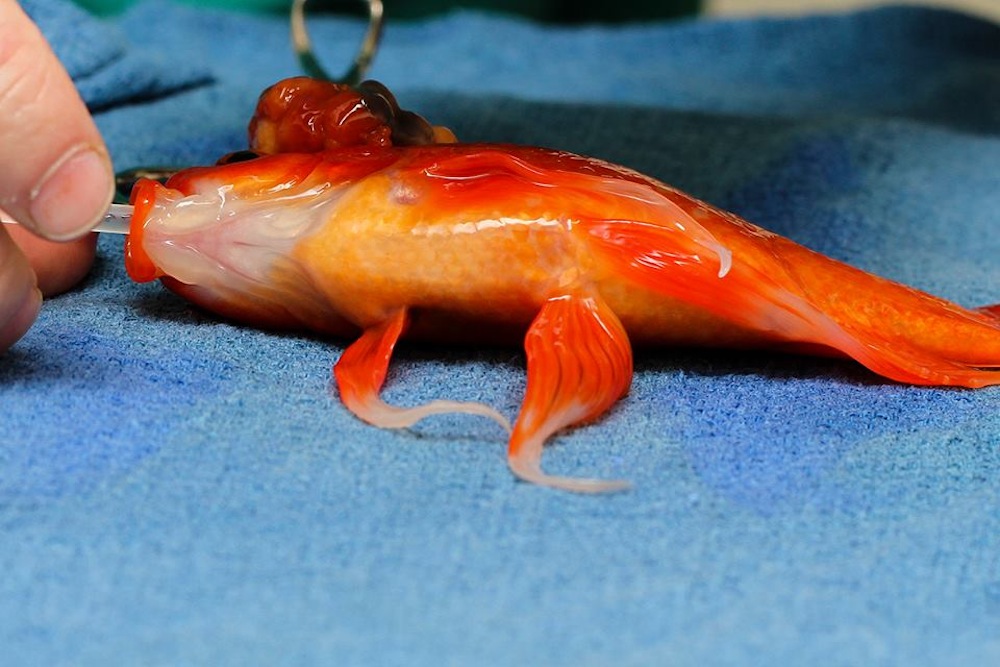Saving Nemo: Pet Goldfish Recovers from Tumor Removal

A little goldfish just underwent a big operation. The pipsqueak, named George, had a life-threatening tumor removed from his head last week at the Lort Smith Animal Hospital in Melbourne, Australia.
George is currently recovering at home in his pond in Melbourne after the tricky one-hour surgery, which went "swimmingly," according to the hospital's Facebook page.
The tumor had been slowly developing over the past year, something that seemed to affect 10-year-old George's behavior. [See photos of the amazing goldfish surgery]
"George's owners decided to do the surgery as he was a much-loved pet who was suffering with the tumor," Lort Smith told Live Science. "It wasn't a brain tumor, but it was a tumor growing from his head."
Apparently the fish was having trouble eating and moving around, even getting bullied by other fish, Dr. Tristan Rich, head of the hospital's exotic and wildlife vet team, told Melbourne's 7News.
To knock out the fish during surgery, Rich set up three buckets, one with the initial dose of anesthetic, another with the anesthetic given to keep the fish asleep throughout the surgery, and one with clean water where the fish would recover, according to Lort Smith's Facebook page. During surgery, a tube ran from the "maintenance" bucket (where anesthetic was being oxygenated) into the goldfish's mouth. That anesthetic-filled water ran over George's gills while Rich removed the tumor.
The tumor was relatively large, and Rich had to use a gelatin sponge to control the bleeding during surgery. With such a big tumor, the surgical cut was also large, and as stated in the Facebook statement, was difficult to seal. "So Dr. Tristan put in four sutures then sealed the rest of the wound with tissue glue," the statement read.
Sign up for the Live Science daily newsletter now
Get the world’s most fascinating discoveries delivered straight to your inbox.
After being placed into the recovery bucket, George received injections of pain medicine and antibiotics.
"Soon afterwards he took a couple of breaths on his own and started swimming around," according the statement on Facebook.
Follow Jeanna Bryner on Twitter and Google+. Follow us @livescience, Facebook & Google+. Original article on Live Science.
Jeanna Bryner is managing editor of Scientific American. Previously she was editor in chief of Live Science and, prior to that, an editor at Scholastic's Science World magazine. Bryner has an English degree from Salisbury University, a master's degree in biogeochemistry and environmental sciences from the University of Maryland and a graduate science journalism degree from New York University. She has worked as a biologist in Florida, where she monitored wetlands and did field surveys for endangered species, including the gorgeous Florida Scrub Jay. She also received an ocean sciences journalism fellowship from the Woods Hole Oceanographic Institution. She is a firm believer that science is for everyone and that just about everything can be viewed through the lens of science.









